Deschutes County Progressives are loving the homeless to death
Radicalized polices and beliefs has created a hell on earth for the homeless.
I spent four months in late 2023 doing the most extensive homeless assessment ever in Deschutes County. What I learned is that, despite what we have been told, there is rampant drug use, victimization, and virtually no homeless outreach offering a permanent solution. A high percentage of the homeless hold a very negative view of the shelter system, and the nearby so-called protected woods have been destroyed.
Last week, I wrote an article in response to a New York Times article written about the homeless crisis in Deschutes County. This article digs deeper, and I am sharing video proof of everything I have discussed. In my four months there and several subsequent visits, I have compiled hundreds of interviews, testimonials, and overwhelming proof that there is a darkness that lies just beneath the surface.
Over the last five years, Deschutes County has reported with the PIT (Point in Time) counts that its addiction rates among the homeless are far lower than anywhere else. The latest PIT count has it at 8% of the homeless population actively using drugs.
Every other community, though, reports numbers closer to 70%-80%, which aligns closely with rates throughout the rest of the county. The only possible reason is that they are either skewing the results to hide the truth or that the homeless have such a strong mistrust of the area providers that they are being lied to. I suspect they keep their addiction numbers low because it doesn’t fit their narrative. The narrative being that the homeless crisis is an affordable housing issue.
The reality is Bend Oregon has serious addiction issues where a high percent of the homeless are actively using fentanyl and meth. It is so rampant that it is impossible not to see unless you choose not to. Here is a video montage where the homeless are describing the drug crisis.
I worked with this homeless woman several times, and when I told her that addiction rates were under 10%, she laughed and called the ones working with the homeless incompetent. She said drug use was closer to 90%.
This is a video montage of testimonies from the homeless about how bad drugs are in the Bend shelter system. The first woman shared she was kicked out for reporting drug use in their bathrooms.
I spent many hours in their shelters observing. What I saw were some major problems. The biggest being staff almost completely ignores anyone who is there. Several times, I went into their shelters and was not even approached once. This is pastor Nick. He travels the country preaching the word and helping the homeless. He went undercover in the Bend shelter system and verified everything I said.
I met many homeless addicts who desperately wanted help but couldn’t get it. One problem with denying there is an addiction crisis is that it limits services to those who need them. This is a powerful interview and a must-watch. I honestly don't know if he is still alive. The night I met him, he was in a very dark place.
He is just one of many I met who were desperate for help and not getting it. He is on fentanyl, the deadliest drug in history. He said if he were given the right support, a little purpose, he would leave the drug. He doesn’t know how, though, and that’s where trained professionals come in. Outreach workers find these people and help them. Outreach, though, is almost non-existent. Despite well-funded teams, most homeless there have never been approached by one. Many homeless people there have concluded they must not exist. The homeless that do work with them admit they wish there were more services. Mostly, they receive water, gas, and clothing. Basic needs items, but rare permanent solutions.
When I lived there for a few months, I made it a point to go everywhere. I walked hundreds of miles through the infamous China Hat woods, ‘Dirt World’, La Pine, Redmond, Sisters, and Bend. The only way to learn the truth is by being boots on the ground.
One concerning issue was the controlling nature of these outreach teams. While I never encountered them in the field, the homeless who did work with them told me and others they were encouraged not to work with anybody other than them.
I met this amazing homeless family of three in the deep woods. They got stranded and needed a car part so the husband could work again. I did a fundraiser the same day I met them, and was able to get them over $900. A few days after the news story, multiple homeless people told me they were instructed to no longer work with me or anybody else. One of the outreach team proactively went into the community and ironically met with the homeless, whom they had never approached, to tell them not to work with any volunteers.
The limited effort of these outreach teams is likely because they are not required to produce measurable results. There are no metrics and no oversight to ensure they are making a difference. This was not by accident. NGOs have historically refused to add metrics to their grants out of fear of being held accountable. I worked in homeless non-profits for many years, and this is common practice.
“Don’t feed the wildlife.” Several volunteer outreach teams provide meals in Deschutes County. There are so many feeds that many homeless people told me they felt they were getting enabled to the point of dependency. I am not against meal providers doing this to help a person meet their basic needs and to build trust. The problem is that if you do this long term, you can make a homeless person so comfortable that they lose the motivation to ever leave the streets. Enabling is a common practice in social services. The big reason is that the homeless are treated like a protected class that needs to to coddled. This is the worst thing you can do to a person. We must instead empower them and help them become self-sufficient.
Many homeless people have strong opinions on the social service system there. So many so I have hundreds of interviews of the homeless who want the truth to come out. Many of the homeless have suggested the homeless system is corrupt. Its no wonder there is such a strong mistrust within that community.
This homeless woman described the time she stayed in one of their shelters, and for some reason, they were all required to go through an intake again. She said not every person used their original names, and she wonders if they did this to get additional funding.
“What happens in China Hat stays six feet under in China Hat.” The worst-kept secret in Bend is that a majority of the homeless were told to go into the woods where they could remain out of sight, out of mind. The homeless I met told me this came from public employees and various NGOs. The most common place they are asked to go to is China Hat. China Hat is a volcanic Butte over forty square miles in size and only a few miles from Bend. Multiple homeless people shared with me how incredibly dangerous the area is, with many reporting that bodies were buried there. I spent weeks in CH to learn as much as I could.
In areas, it is extremely dangerous, whereas in other areas, they had set up friendly communities where people appeared to be thriving. I spent many overnights there, and that is when it became the most sketchy. Many cars arrived after 10 pm for drug-related activity. There is a main road that mostly divides the large area. Driving into China Hat, the right side was easily the sketchiest, where the left side has many homeless that are doing their best to stay away from the chaos. Regardless of the good and the bad, nobody should have ever been allowed to live like this. The brand of Bend is obsessively protected, so the image of it will never be tarnished, and a big reason why they were sent there.
Allowing the homeless to move into our woods has led to one of the largest man-made environmental disasters I have ever seen.
I found hundreds of abandoned RVS, cars, and millions of pounds of trash left by the homeless. I was surprised there was virtually no outrage from the area environmentalists.
In the months I was there, I conducted hundreds of video interviews, recorded in and outside their shelter system, talked to current and former shelter workers, and met with many elected officials and stakeholders. I also met a good 30% of their homeless population. The City of Bend is very progressive and often at odds with the County, which has different ideological views. They have a few City councilors who have a notorious reputation for getting into fights with people online. This is counterproductive and unbecoming of elected officials.
One last thing to note. In the PIT count summary, they ended by saying, ‘Housing ends homelessness’. That is not true and shows they do not understand or know their homeless population. Over half the homeless population in Deschutes County chooses to live outdoors.
They consider it a lifestyle. They will not accept traditional housing. Many though told me they would accept sanctioned camping. I call this the community compromise. Many would agree to not camp on the sidewalks, parks, and woods. They want to be outdoors, though. Sanctioned camping would allow them to remain outdoors but in a specific area with wraparound care services.
This homeless woman with serious medical issues, who will likely die on the streets has a message for the City of Bend. “Pull your head out of your a**’ She encouraged them to try and work with others even if they don’t share the same ideology.
Deschutes County is one of the most beautiful areas in Oregon, yet it is plagued by radicalized politicians who are slowly destroying it. They have
ignored the homeless crisis, lied about the addiction crisis, and allowed their amazing forests to be destroyed. The homeless have spoken, and they are fed up. They are desperate for change and need people to work together.
This community is in a real crisis. Their PIT counts show a serious dysfunction in the system, and this dysfunction is negatively affecting the homeless. Their shelter system needs a complete overhaul with more training. Outreach teams need to produce measurable results. The community as a whole needs to acknowledge that they have a severe addiction crisis affecting a high percentage of its homeless population. Funds need to be reallocated to build additional detox facilities. The opioid crisis there is serious and needs attention.
Then the difficult works begin. Find a way to work together despite ideological differences. This is possible. The homeless are counting on it.
The title of my article came from a quote a homeless woman told me who I met in China Hat. She said, “They are loving us to death”. This is the third time I have heard the near-exact quote from other homeless people over the years. They say this because they are tired of being enabled by the system. They want help to become self-sufficient. They want responsibility and even consequences for their actions, which everyone else has. It’s time to listen to them.

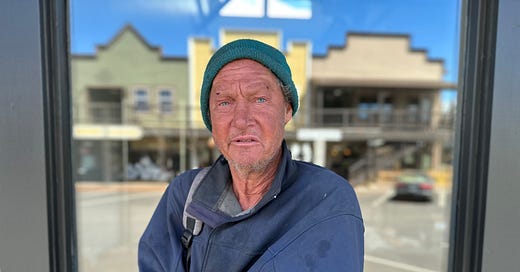



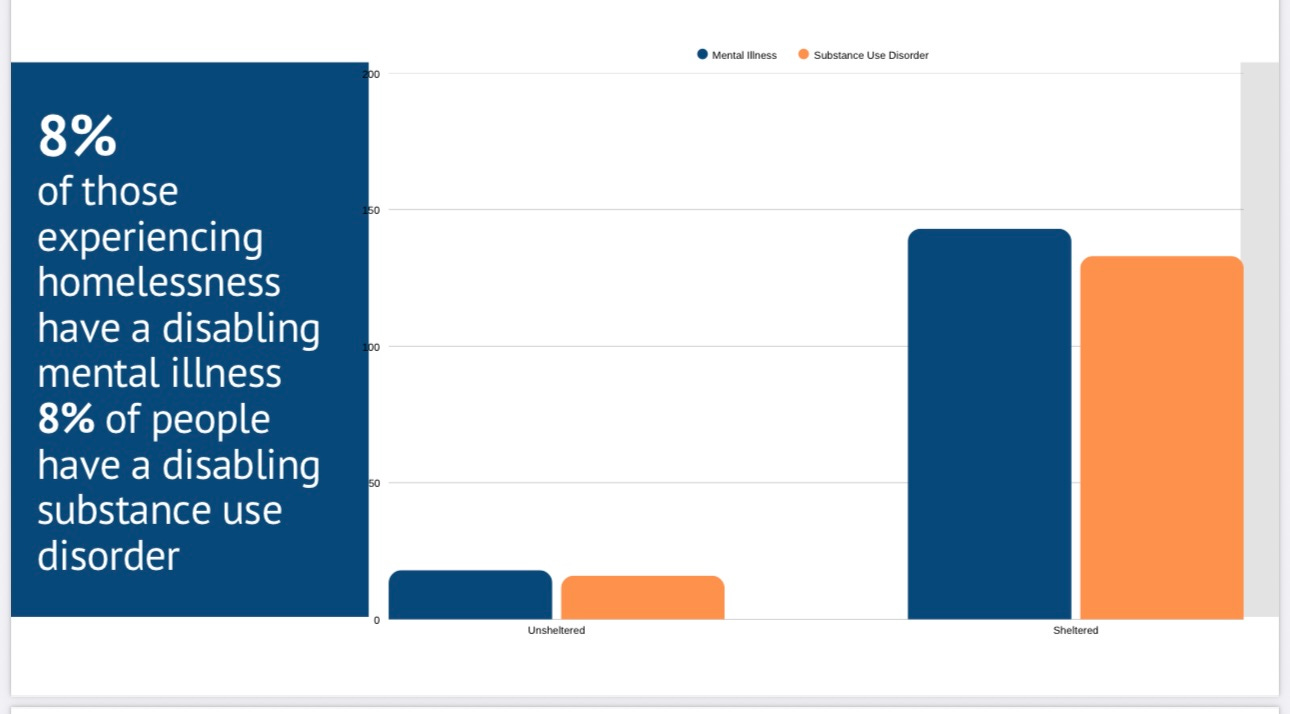
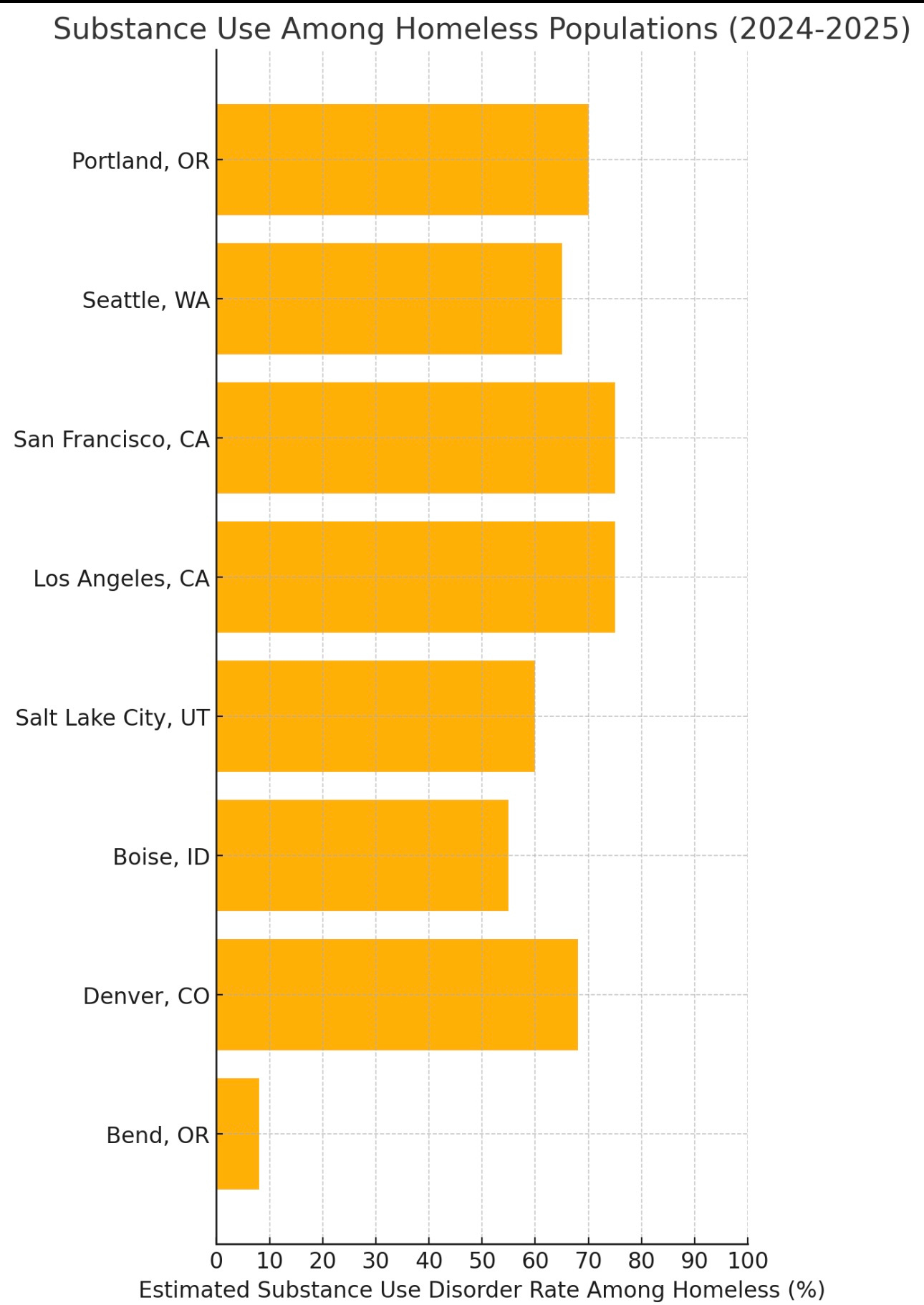
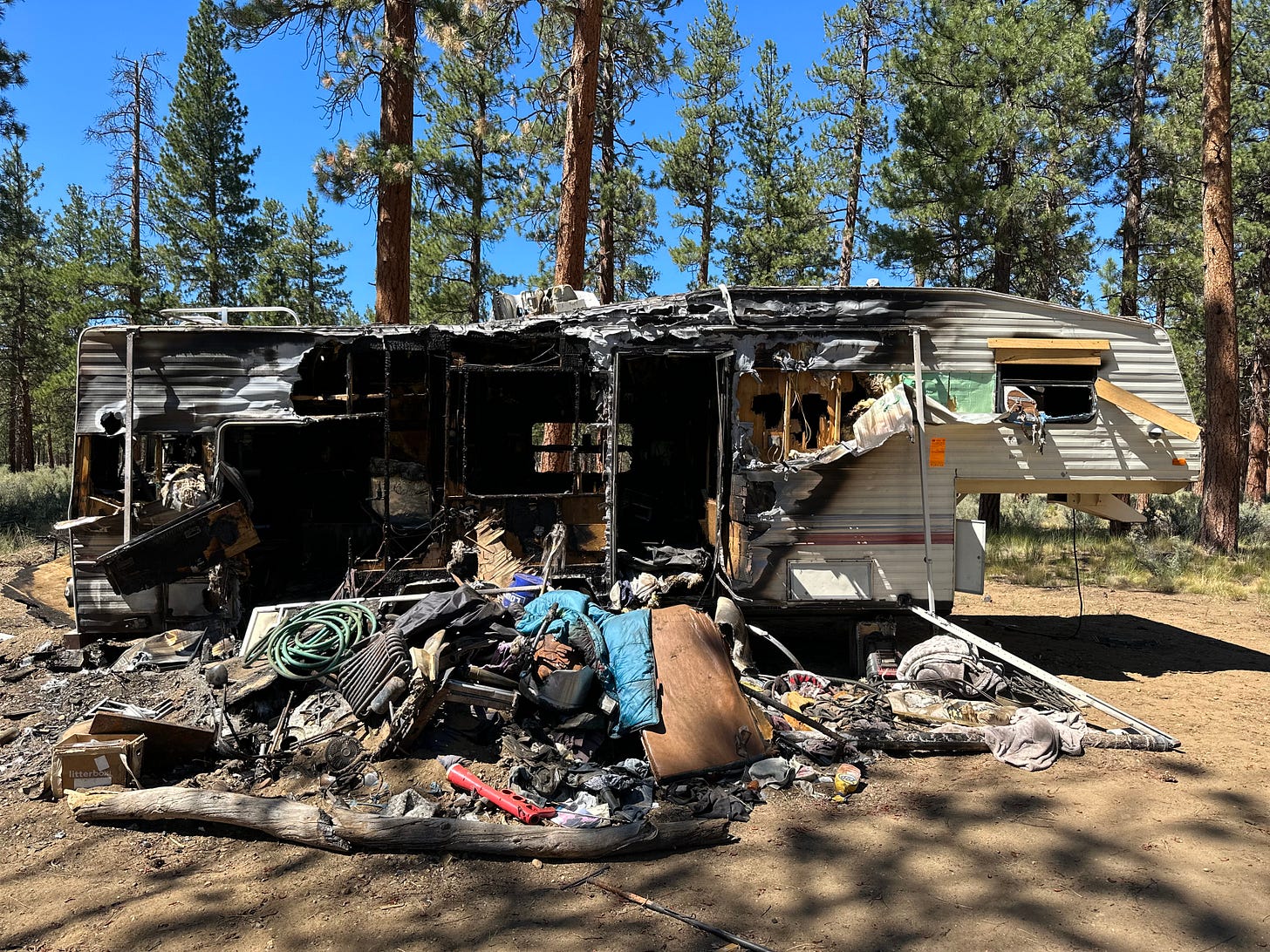
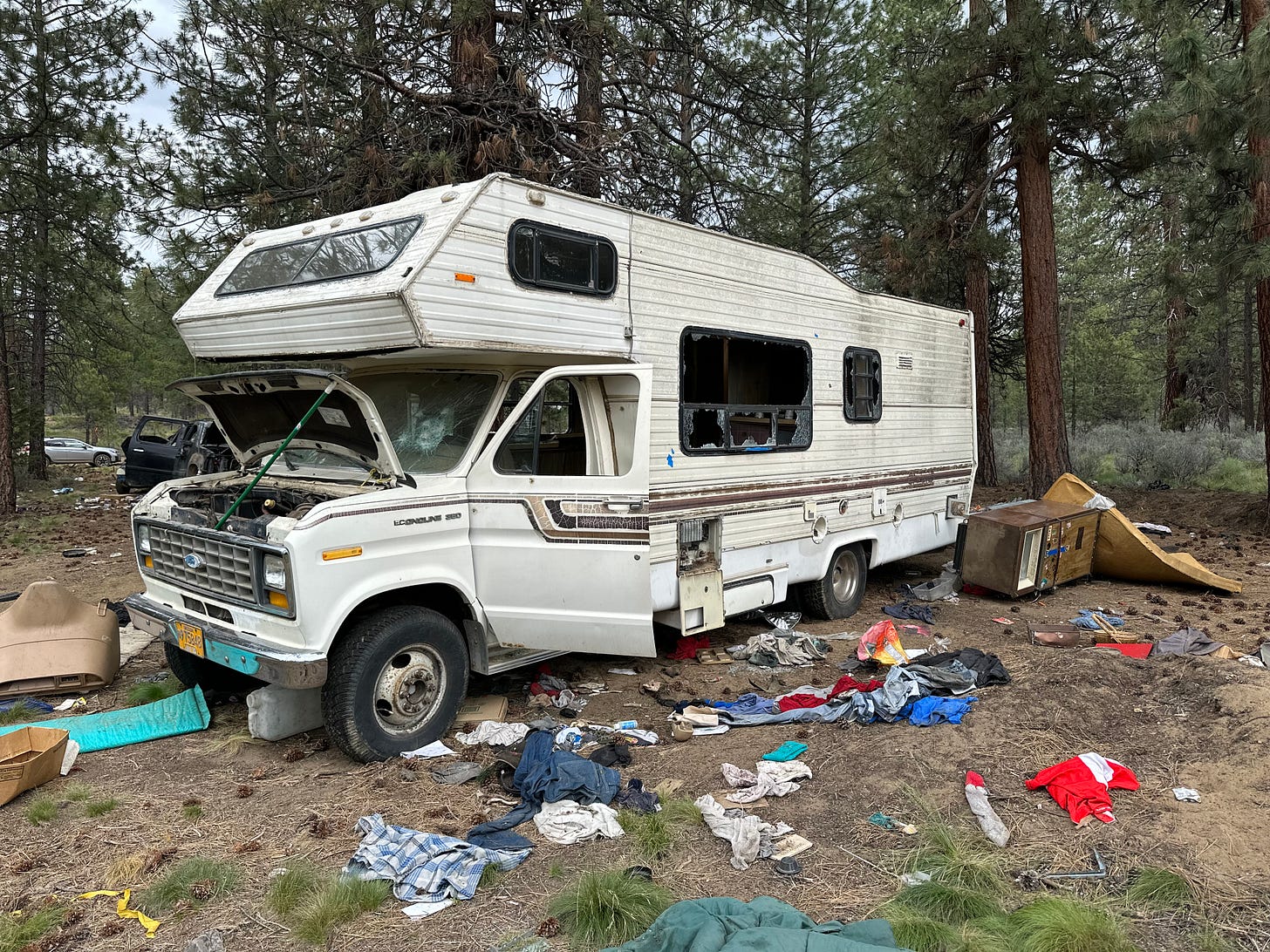


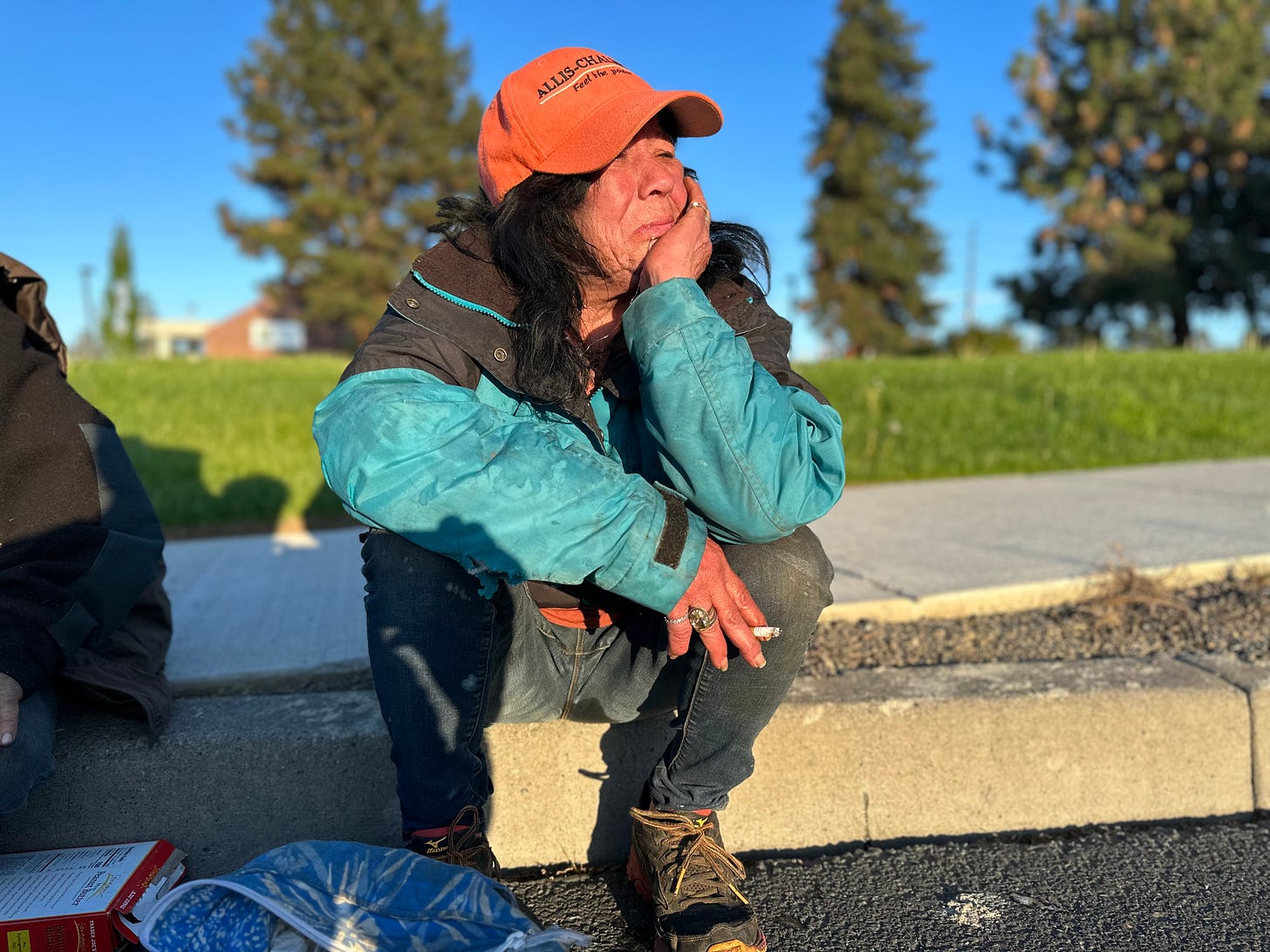

Excellent commentary.
As a long-time subscriber to the NY TIMES I found their article beyond annoying.
The very common sense reason the USFS is blocking off access to extreme fire danger areas is that - particularly in summer - the homeless infestation in the woods becomes really dangerous.
Although this has gotten worse as Oregon has essentially legalized one drug after another (peaking in 2020 with M 110) the "hidden" problem has manifested itself in Deschutes County for decades.
I moved to Bend in 1990 to take the job of Chief Deputy DA and the first couple weeks was a human-caused forest fire so large it lit the entire night sky. Over the following four years both as a state prosecutor and a special federal prosecutor I handled "wildland arsons" and discovered how many of the quickly devastating fires were caused by extreme recklessness or outright arson.
It is hard enough to get tourists (whose license plates we track) to avoid dangerous camp fires oir fireworks, when a population exists outside all the rules and lines, there will be fire...
Your reporting is interesting as always, but it's also wild to me that you've written two articles analyzing the root causes of homelessness in Bend without mentioning the fact that the median home price is now over $800,000.
How many outreach workers would it take to effectively reduce homelessness, when the median home price is still going to be $800,000?
Also, "don't feed the wildlife?"